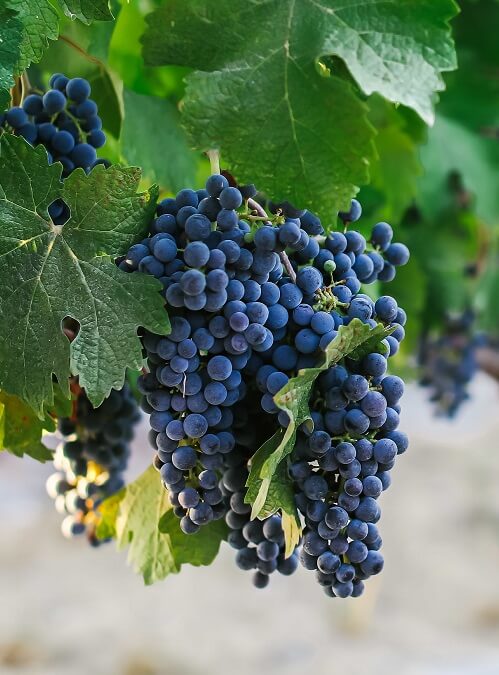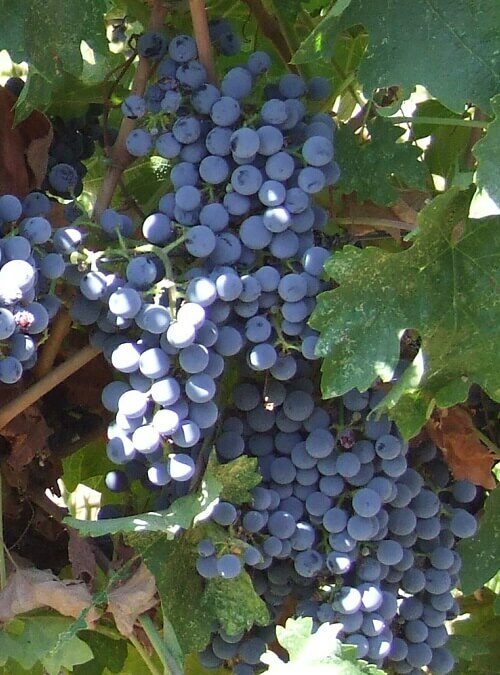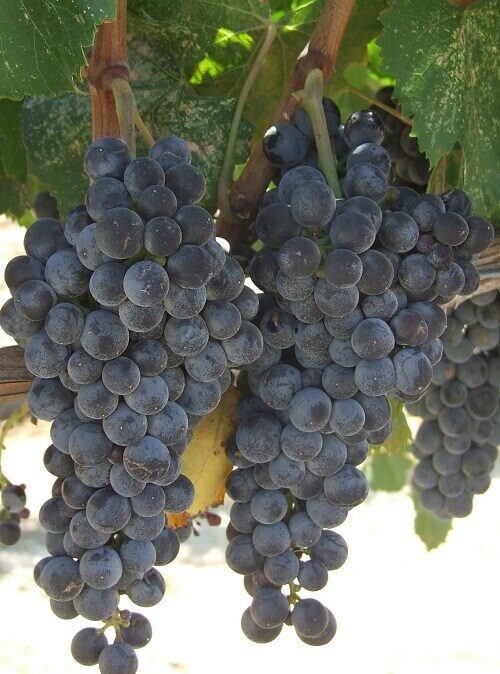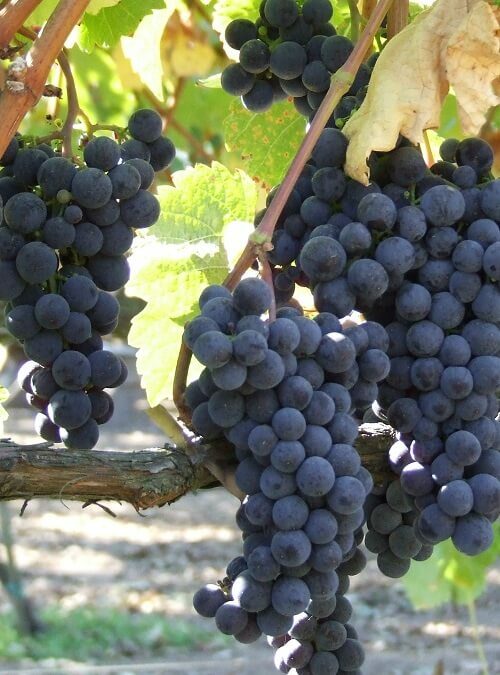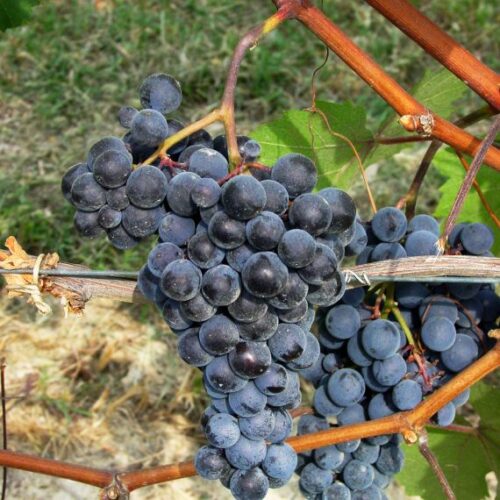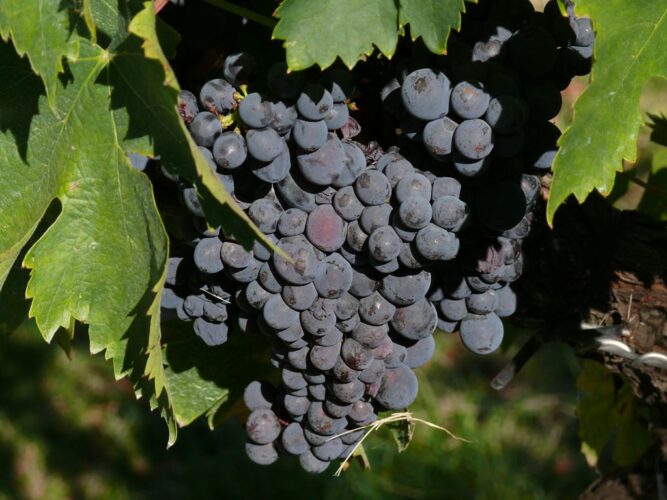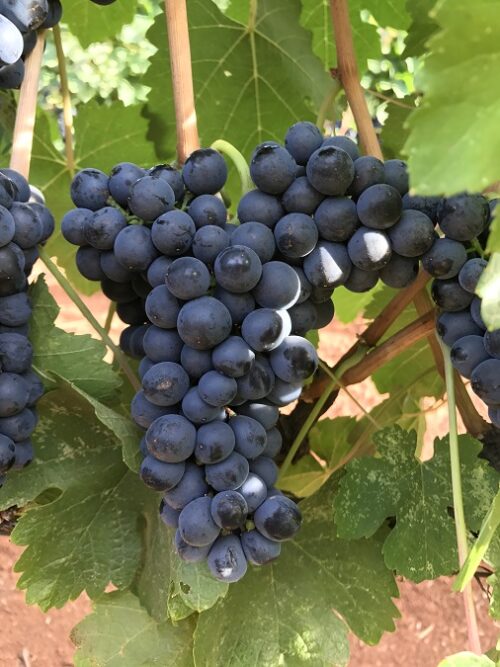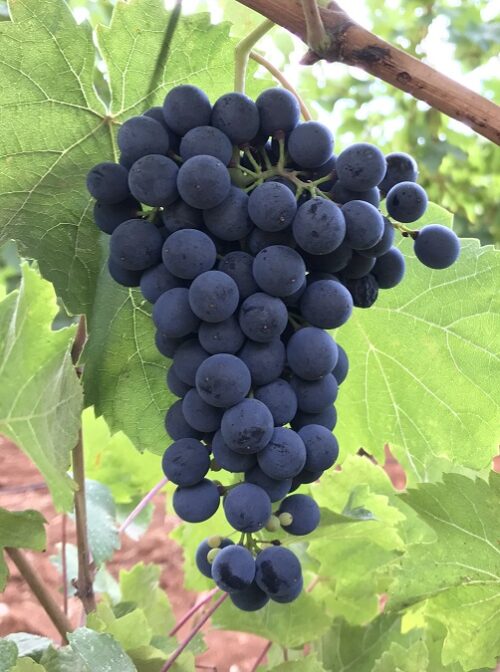-
Vine shelters are used to protect your newly planted vines from drying out, extreme temperatures, and critters such as rabbits. They are a wax coated paper product similar to a milk carton. They are 20 inches tall and have holes along the side so you can attach them to the stake. The top is designed to fold closed and then be re-opened when the vine reaches the top.
-
A parent to Merlot and Cabernet Sauvignon, Cabernet Franc is another of the Bordeaux varieties. Cab Franc is lighter than Cab Sauv with different flavor profiles. It ripens a little earlier than Cab Sauv and is very popular on the East Coast of the U.S. as it has a good tolerance for cold winter temperatures. Like Cab Sauv, Cab Franc has small, thick skinned berries that have a high tolerance to diseases.
-
Cabernet Sauvignon is our most popular selection. It is the most widely planted and recognized red wine variety in the United States. It is suitable for all growing regions where grapevines can be grown. Cabernet Sauvignon is easy to grow and care for and has low disease susceptibility. It is very tolerant to cold winter temperatures as well as high summer temperatures.
-
Chardonnay is our most popular white wine variety and is the most widely planted commercial white wine variety in the United States. It is suitable for all growing regions where grapevines are grown. Chardonnay has medium disease tolerance and is very tolerant to winter cold temperatures. It has medium to large clusters and berries and produces very well.
-
Grenache is a late ripening variety that prefers hot and dry climates. Given the right conditions this variety can produce a large crop that will need to be balanced in the vineyard for quality wine production. The wines produced from this variety usually show bright red fruit and subtle spice characteristics.
-
One of the six main Bordeaux varieties, Malbec, or Cot as it is called in France, is a great stand-alone variety but normally used as a blender. It is fairly productive and provides deep color. It is grown throughout the world including France, the U.S., Argentina and Chile. However, it is not very winter hardy, so it is not recommended for regions dipping below 20 degrees F.
-
A white grape variety most commonly found in the Northern Rhone region of France. This variety often produces a relatively heavy crop of loosely clustered berries that prefer dry warm regions to grow in. The wine shows flavors of melon, honeydew and mineral, along with undertones of nuttiness. This could be a great substitution for Chardonnay or could be blended with Roussanne.
-
Another Bordeaux variety, Merlot is one of the most widely planted varieties in the world. It produces medium tannic wines with black fruit characteristics. It is consistently productive with loose clusters and large berries. It is suitable in hot and cooler climates and has good winter hardiness.
-
Sagrantino is an Italian grape variety indigenous to the region of Umbria. It is vigorous yet low-yielding vine. It flowers early, but requires a long hot season to ripen.
-
More popular as Petite Sirah in the U.S., this variety produces inky, black, full bodied wines. It is often used as a blender with Zinfandel. But, it is also blended in small amounts with other varieties to add color, and structure. The berries are small (petite) and the clusters are tightly packed making it highly susceptible to bunch rot. It is not considered a cold tolerant variety.
-
This is the latest ripening variety of the Bordeaux family of grapes. It produces rich colored wines with high tannins. The clusters and berries are small. It is grown throughout the world in small quantities. But, it is not considered a winter hearty variety.


